Our last leg was in Miami. It was interesting to be back in the United States but still have scavenges to do. Even though Mom and I have both been to Miami before, we were not at all familiar with the scavenges that we had on the list.
Due to the amount of stuff we did this day, we will break it down into two posts.
The morning after we arrived we arose ready for adventure! The Metrorail is right across the street from the hotel, so after a quick breakfast we ambled over there and hopped on board; off to our first scavenge at the Viscaya Estate.
The Metrorail is a handy way to get around the city; it goes to the airport and circuits around 25 miles of the major parts of the city. The metromover is a free system that branches off of the rail to conduct people to other areas of the city. The rail is very inexpensive, and the mover is free, so check it out whenever you are in Miami!
After getting off the Metrorail, we had to walk around a little to find the Estate, because it is well hidden behind trees with a long walk path leading to the street. We purchased our tickets, little knowing what we were about to experience.
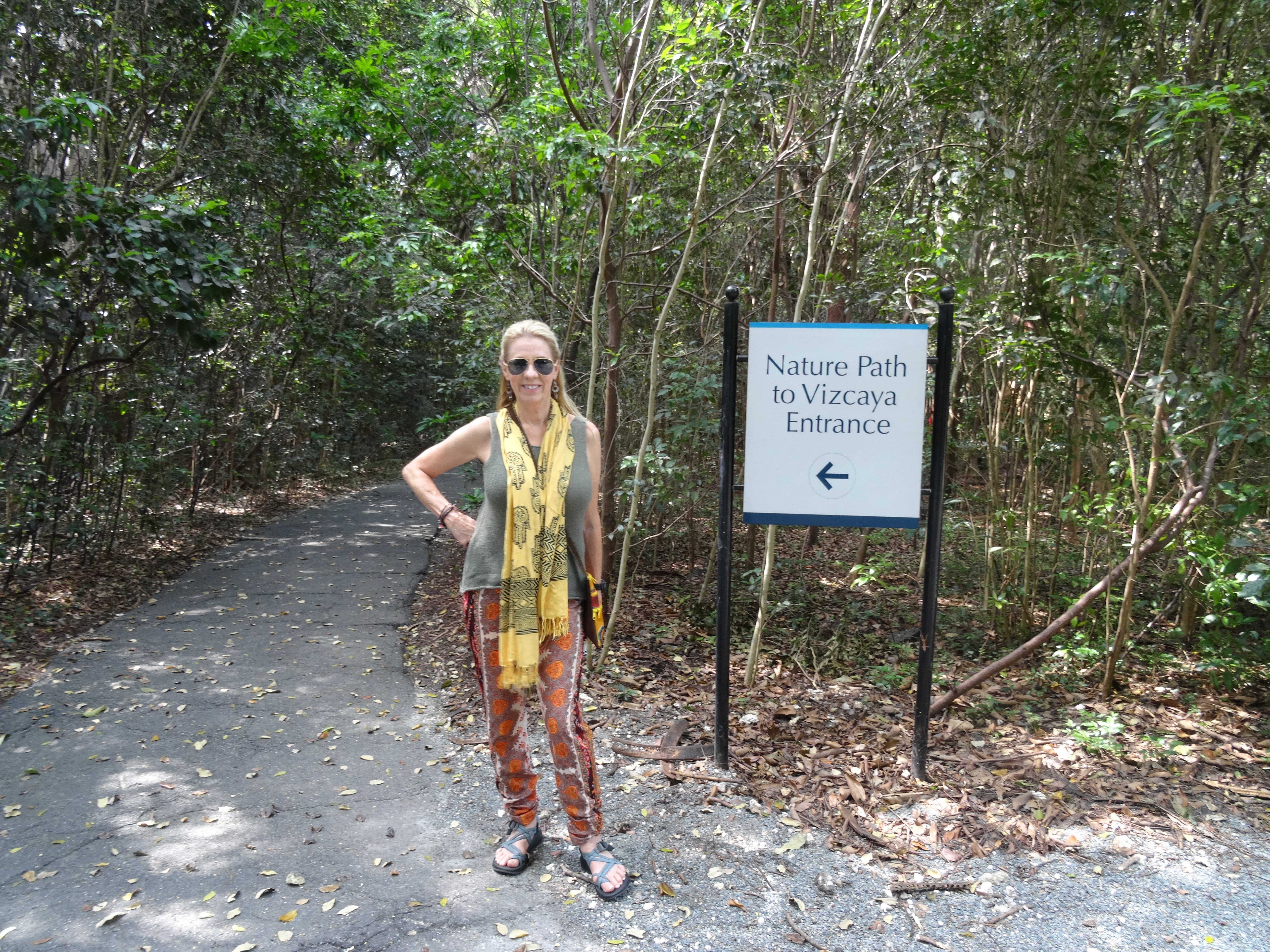
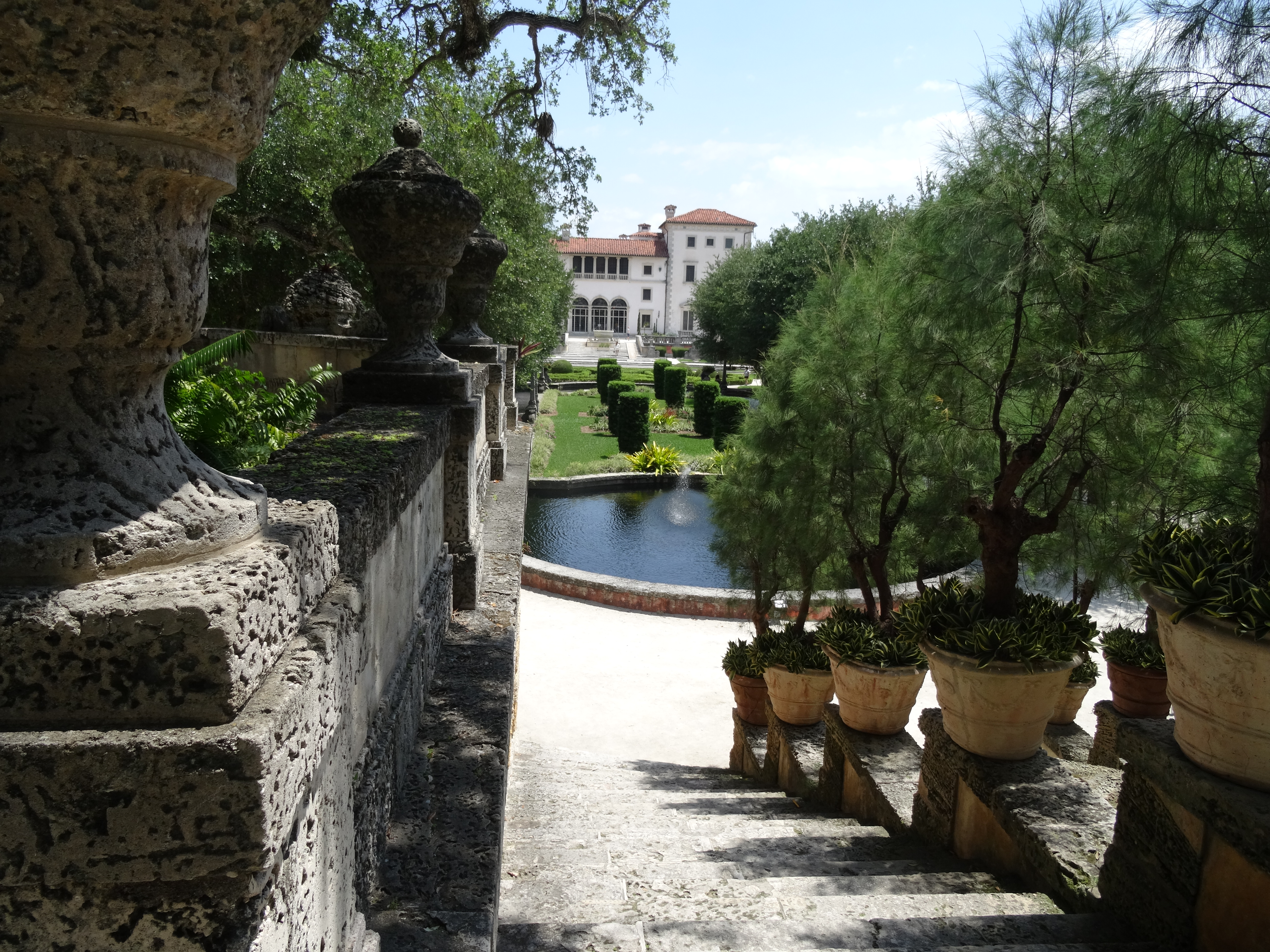
Built in the 1910’s, the Vizcaya Estate was established by James Deering as a 34 room winter residence (he resided in Europe in the summertime). Mr. Deering made his vast fortune in the agricultural industry, creating a business with his father and half-brother called the Deering Harvester Company, and was as innovative in the creation of his home as he was in his business. In 1912 he purchased 130 acres with the intent of building the Vizcaya, but he later bought 50 more acres.
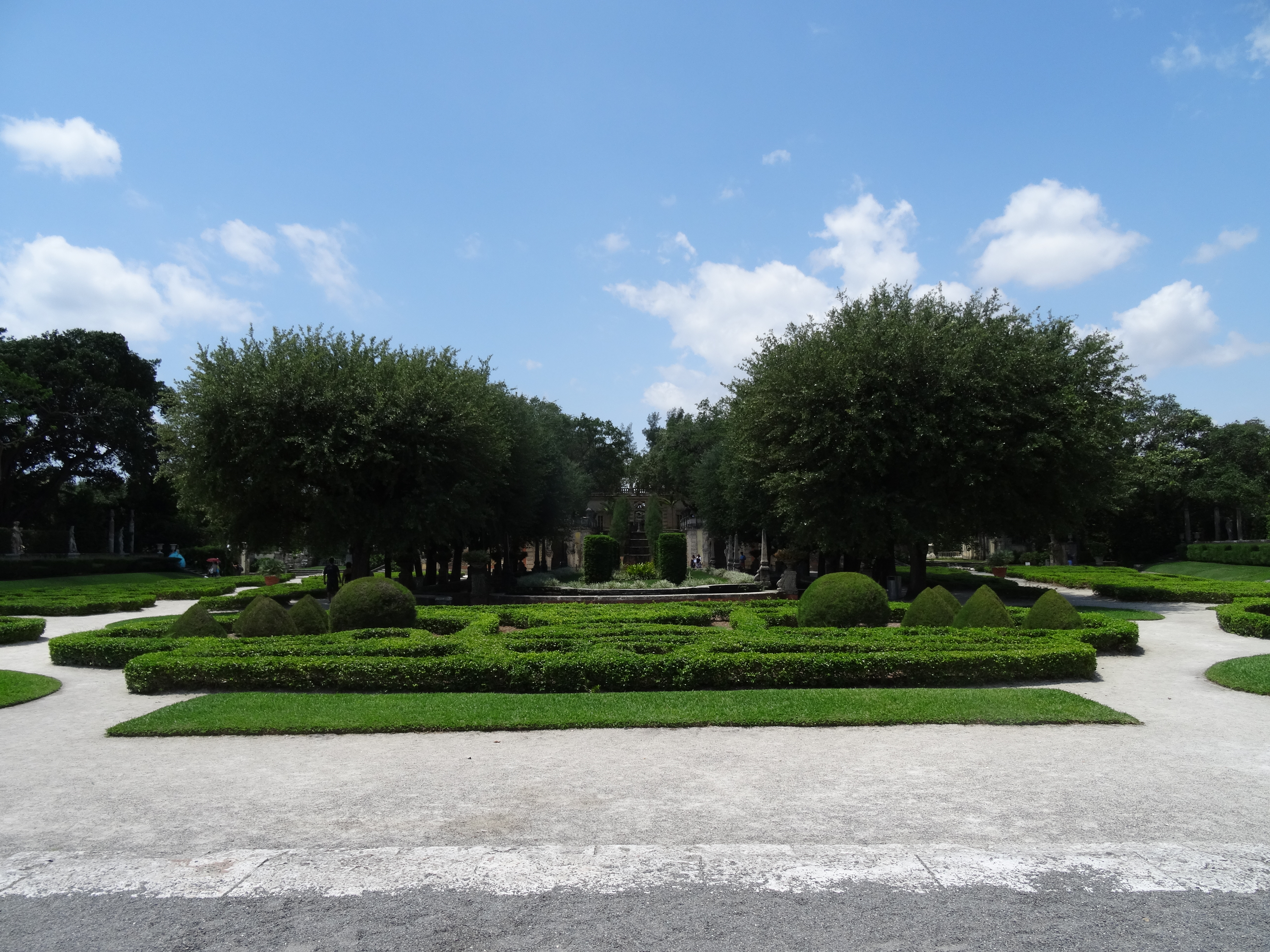
From the initial thought in 1910 to the completion of the house in 1916, and the landscape in 1921, Deering was very heavy handed in the project, and put a lot of thought into every single thing. His Artistic Director was Paul Chalfin, and the two of them traveled to Italy numerous times to look at antiques and villas for inspiration. Deering filled the interior of his winter home with these antiques. Francis Burrall Hoffman, Jr. came on board to be his architect, and he perfectly captured Deering’s ideas. Deering wanted the Estate to be reminiscent of old world and new, with an emphasis on explorers. An avid boater, Deering also wanted boats to be a common theme around his home.
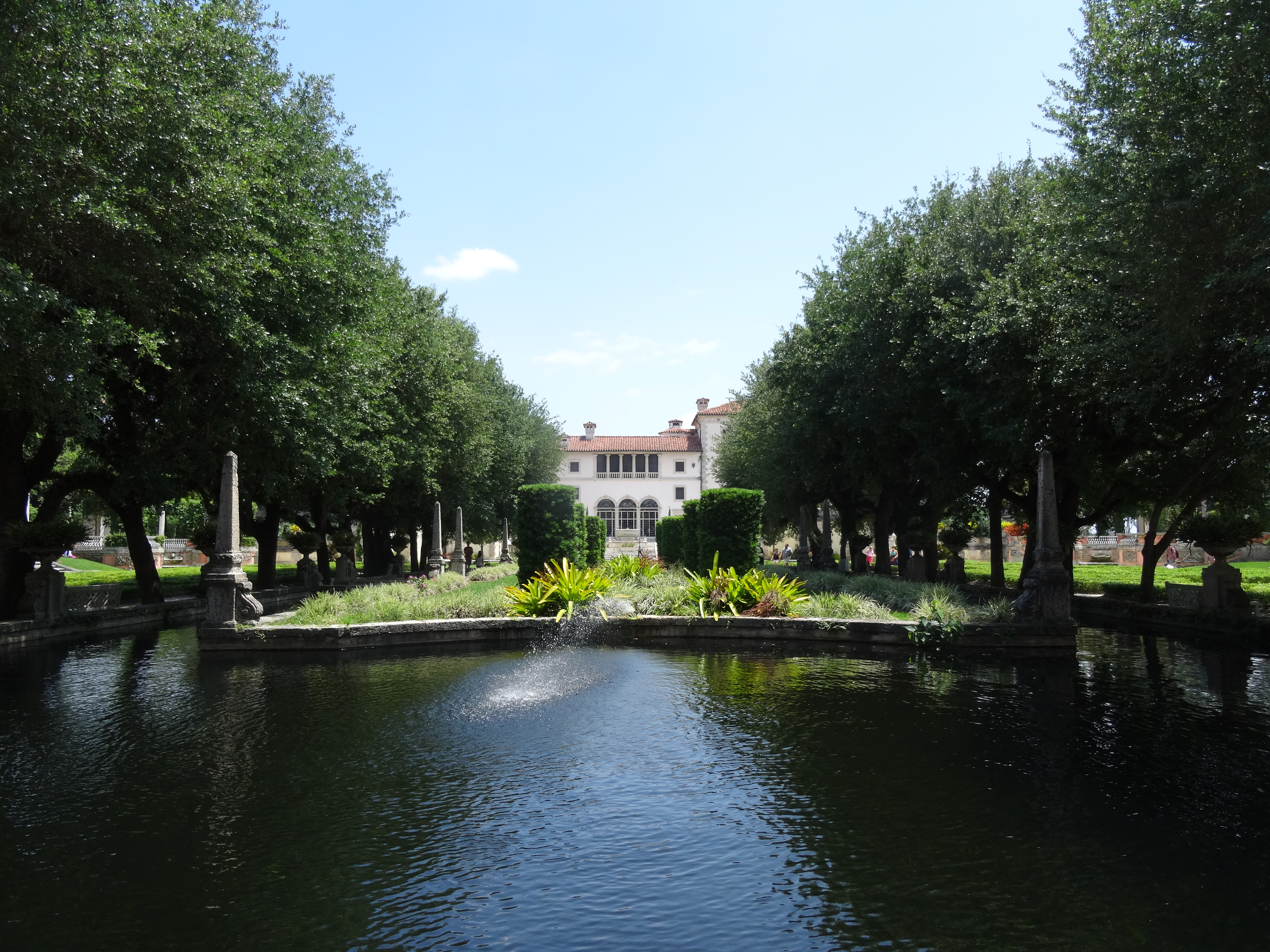
The Main House and Estate
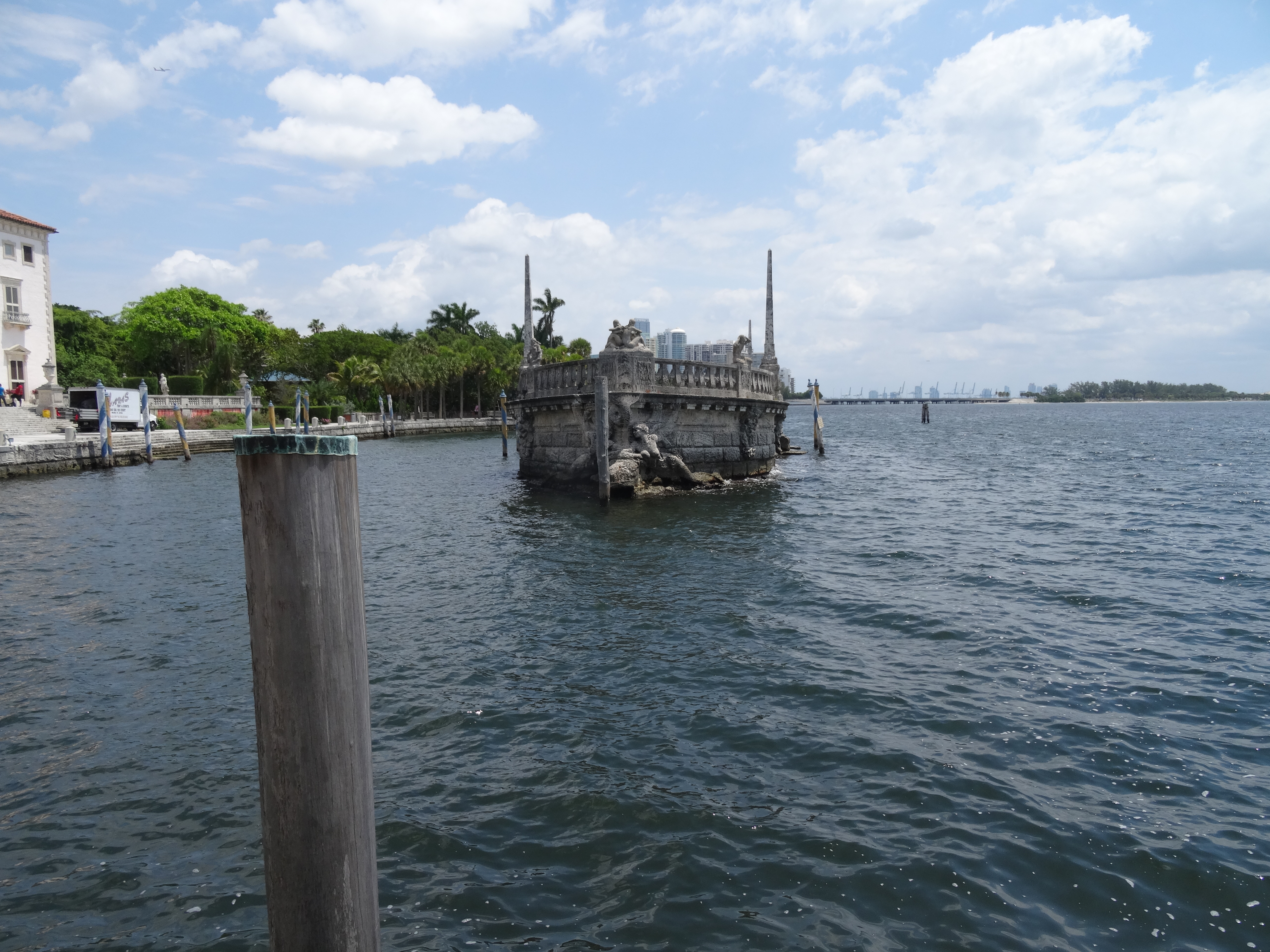
The Breakwater
Deering was sick with pernicious anemia, which is why he migrated to Miami in the first place, as the doctors stated that the air would do him good in the wintertime. As his estate grew his health declined, and he became more and more enamored with his project, creating in the end a masterpiece beyond his original intentions. He often entertained foreign ambassadors and other political figures, as well as famous people from all over Europe, and this house was a perfect place to do that. Deering had always been a great entertainer, hosting guests in his Chicago and New York homes before the Vizcaya, and he was known as a social ambassador. It is really a full-circle story, because even to the modern day the Vizcaya is used to host ambassadors, royalty, and US politicians. I believe Deering would have been happy with that.
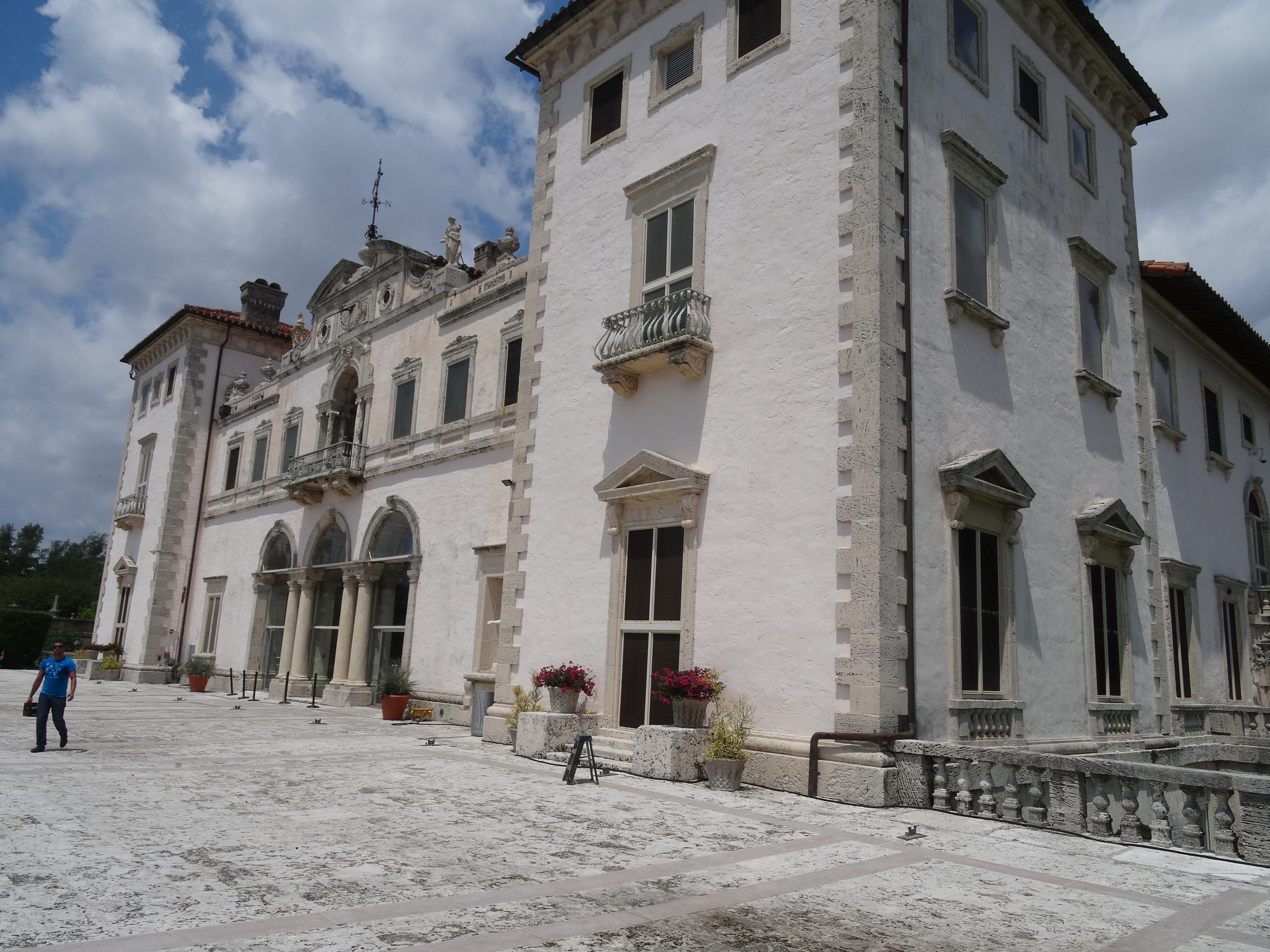
The Main House
Deering named the Vizcaya through an interesting train of thought. He wanted something that gave the impression of an explorer’s name, as well as a tribute to Florida’s history. Through study he learned about a Spanish explorer called Vizcaino who explored around the Americas during the 1600s; the Biscayne Bay, on which the house stands, is said to be named after him. This was exactly the type of name that Deering had in mind: pretty to the ear, easy to pronounce, and reflective of the explorers and America. He changed the spelling to be “Vizcaya” and was very pleased with it.
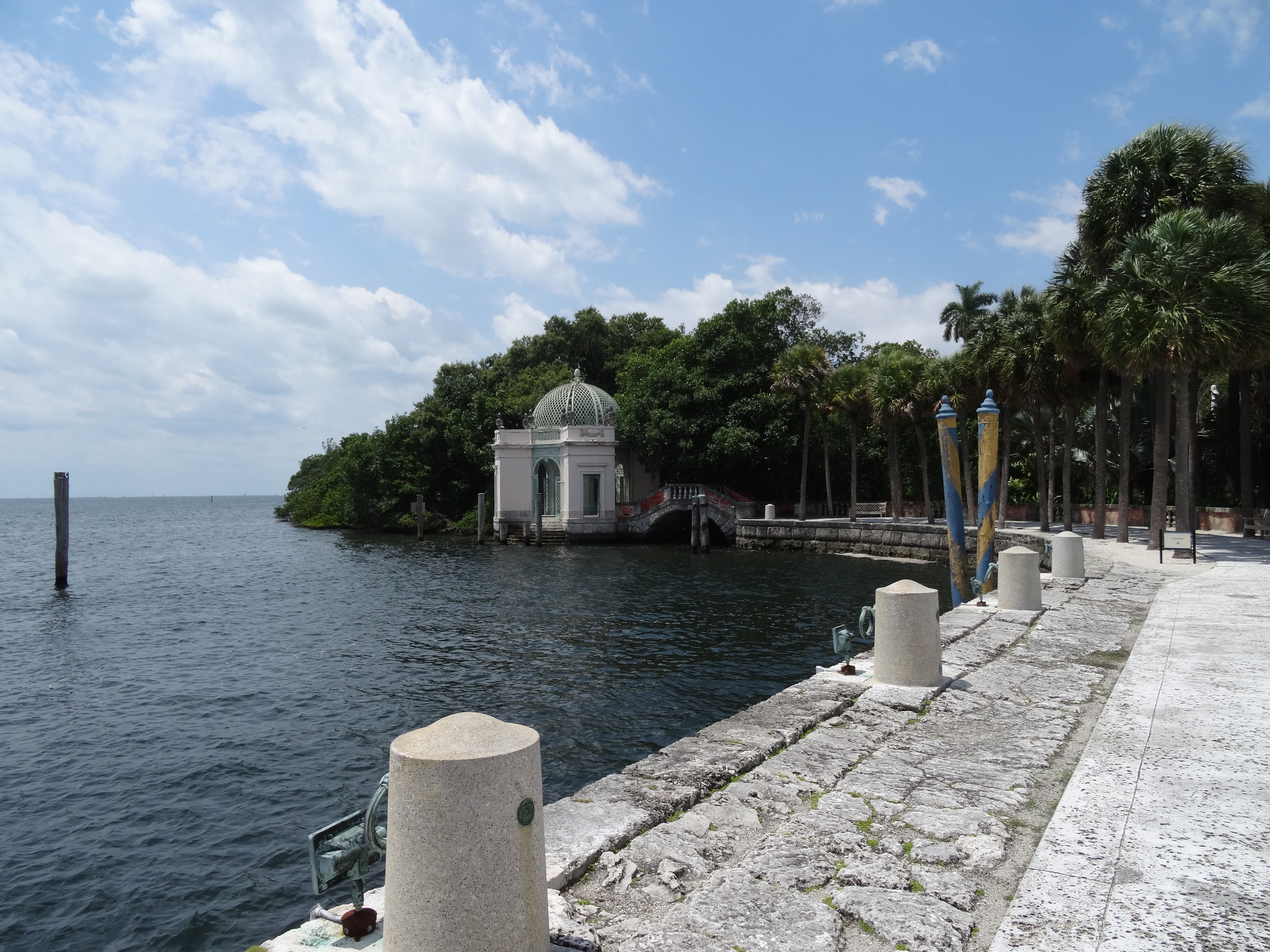
Biscayne Bay
As the place was under construction, Deering took many trips to Europe to collect rare and precious antiques. He took two luscious, hand-painted ceilings from Italy, and designed the size of the rooms to fit the ceilings. He had tapestries that belonged to Elizabeth Barrett Browning, a handwoven wool rug that belonged to the Grandfather of King Ferdinand and a table from Pompeii, among numerous other treasures (around 2,500 artifacts).
The house was designed to be completely modern. There was a telephone system from which one could speak to the servants (there were 16 to 18 members of staff and 26 or more gardeners and caretakers). The house also had a pulley system, by which the kitchen staff could transport food from the main kitchen downstairs to the preparation kitchen upstairs.
One of the big factors of this house was the swimming pool, which was part indoor, below the house, and part outdoor. Beautifully maintained, the pool was a novelty for its time, and is deeper than most pools generally were.
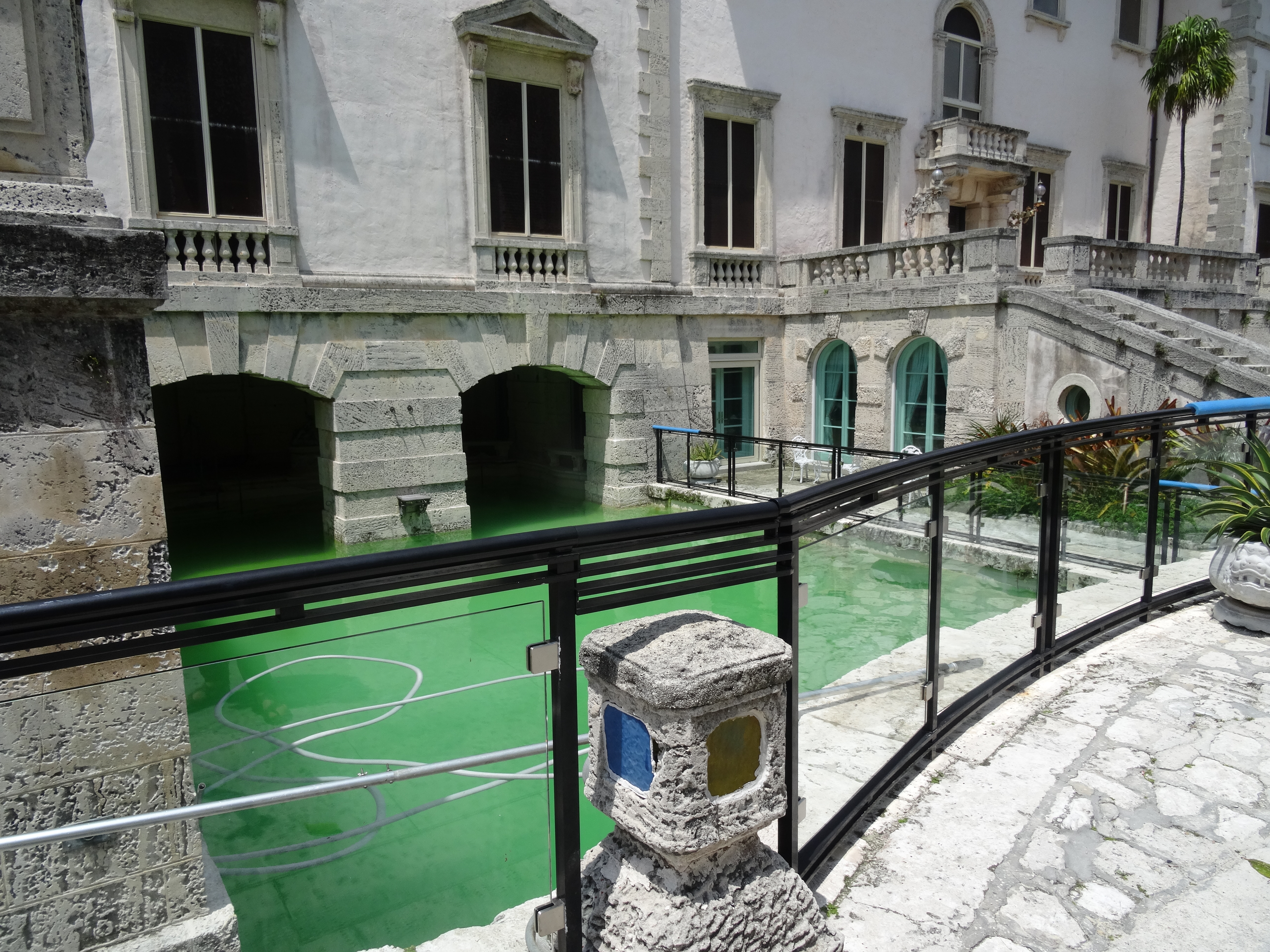
The Pool
Everything about the estate is spectacular. The numerous parlors, sitting rooms, the music room, and other entertaining areas are spectacularly detailed, from the architecture to the last swipe of the paintbrush. Rich earthy tones predominate the wallpapers and furnishings, and hand-woven rugs pervade the intricately tiled floors. Beautifully carved furniture is situated to perfection and the window treatments offset everything. The library is extensive, and Deering had every book wrapped individually in paper when he left for the summer season, to protect them from the intense humidity.
The bedrooms are located on several levels of the house, and each has a theme and corresponding name. The bedframes are imported, and some have historical significance from before the time of Deering himself. The upper rooms are situated off an interior courtyard, so that you can look down and see the beauty below.
Chalfin and Hoffman captured the nautical theme to perfection; Our favorite example of this is at the ceiling of the sunroom, where a detailed carved ship hangs down. When the doors of the sunroom are opened, the pathway leads out to a decadent porch with a view of the bay and Deering’s breakwater entertaining ship, docked nearby.
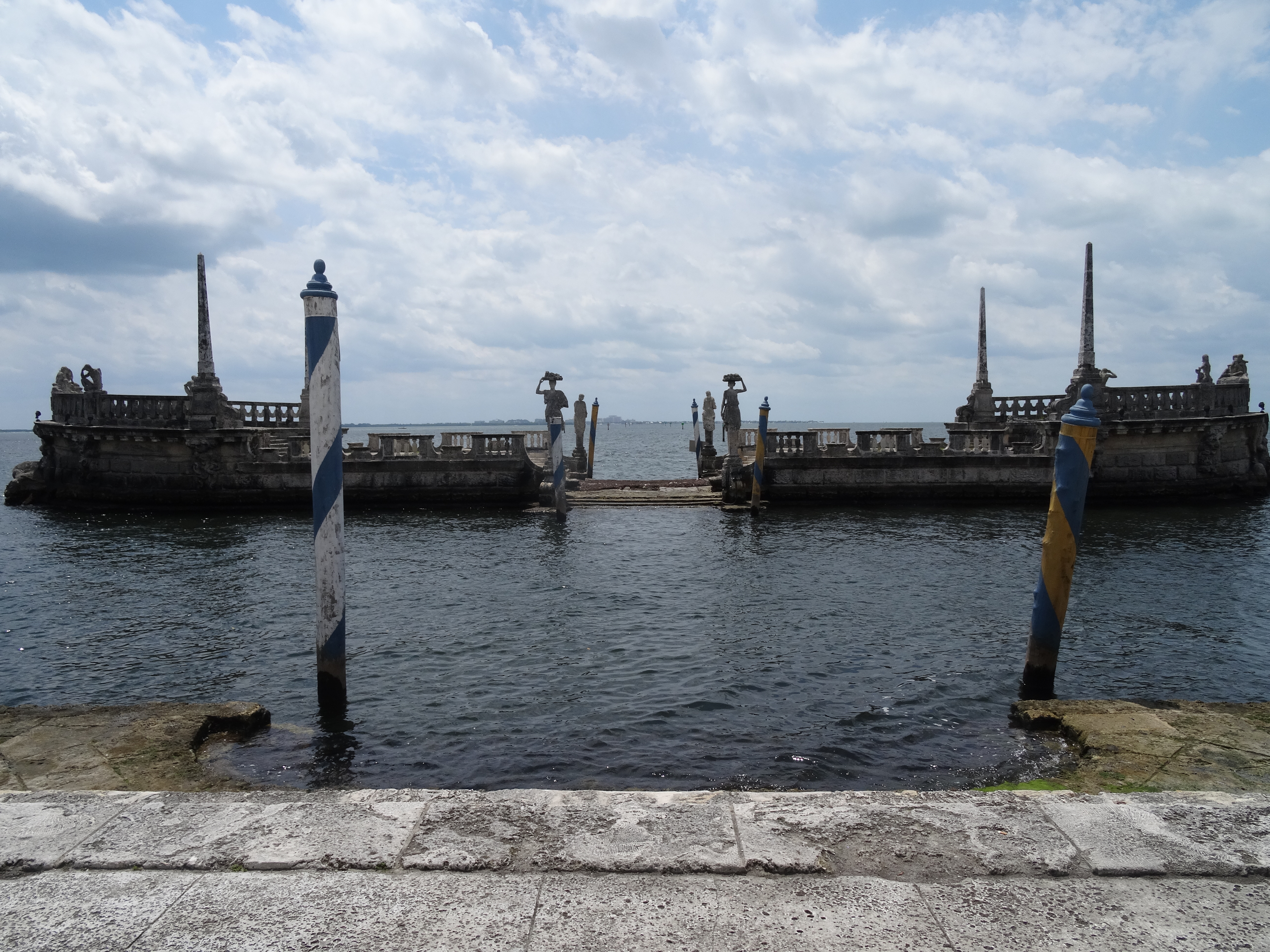
The Breakwater
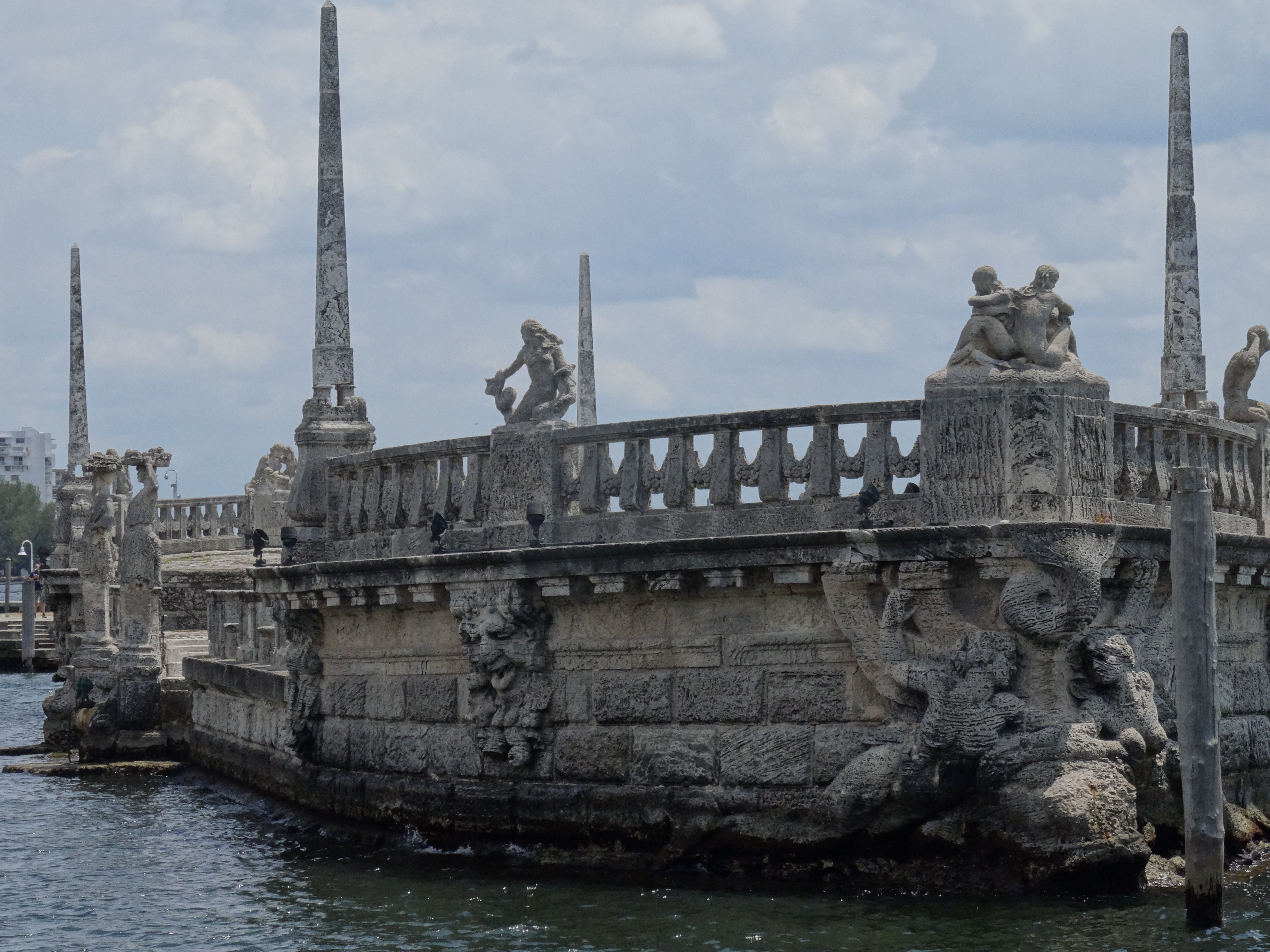
The landscaping, directed by landscape architect Diego Suarez, is just as magnificent as the main house itself. Boasting 10 acres of formal gardens in the European style, this space contains 2,000 indigenous plants, designed into mazes and spotted with stone benches, gazebos, a changing house, little caverns, and fountains. One could walk around for hours and still be unable to take in everything that the grounds have to offer- we know, because we tried.
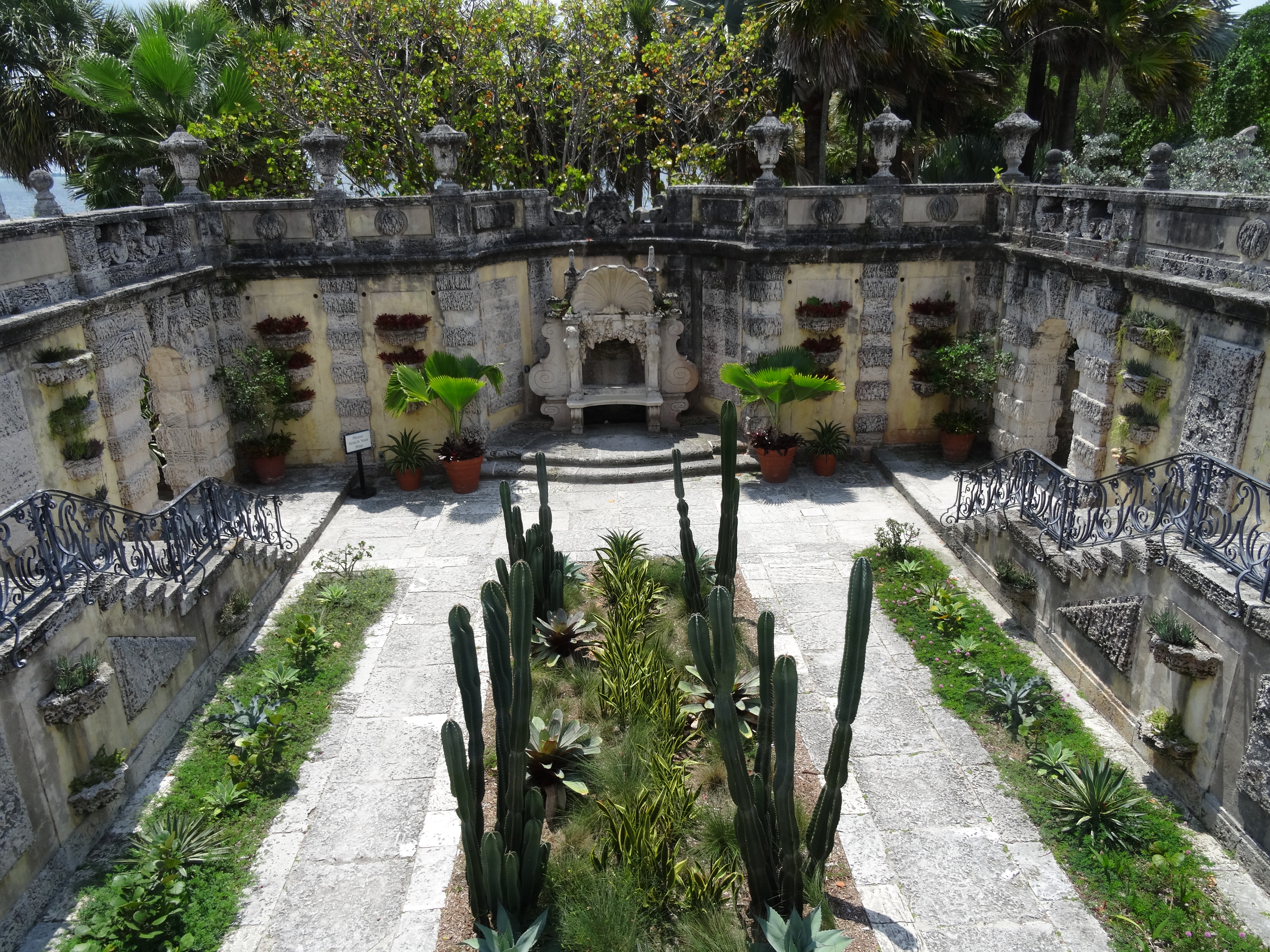
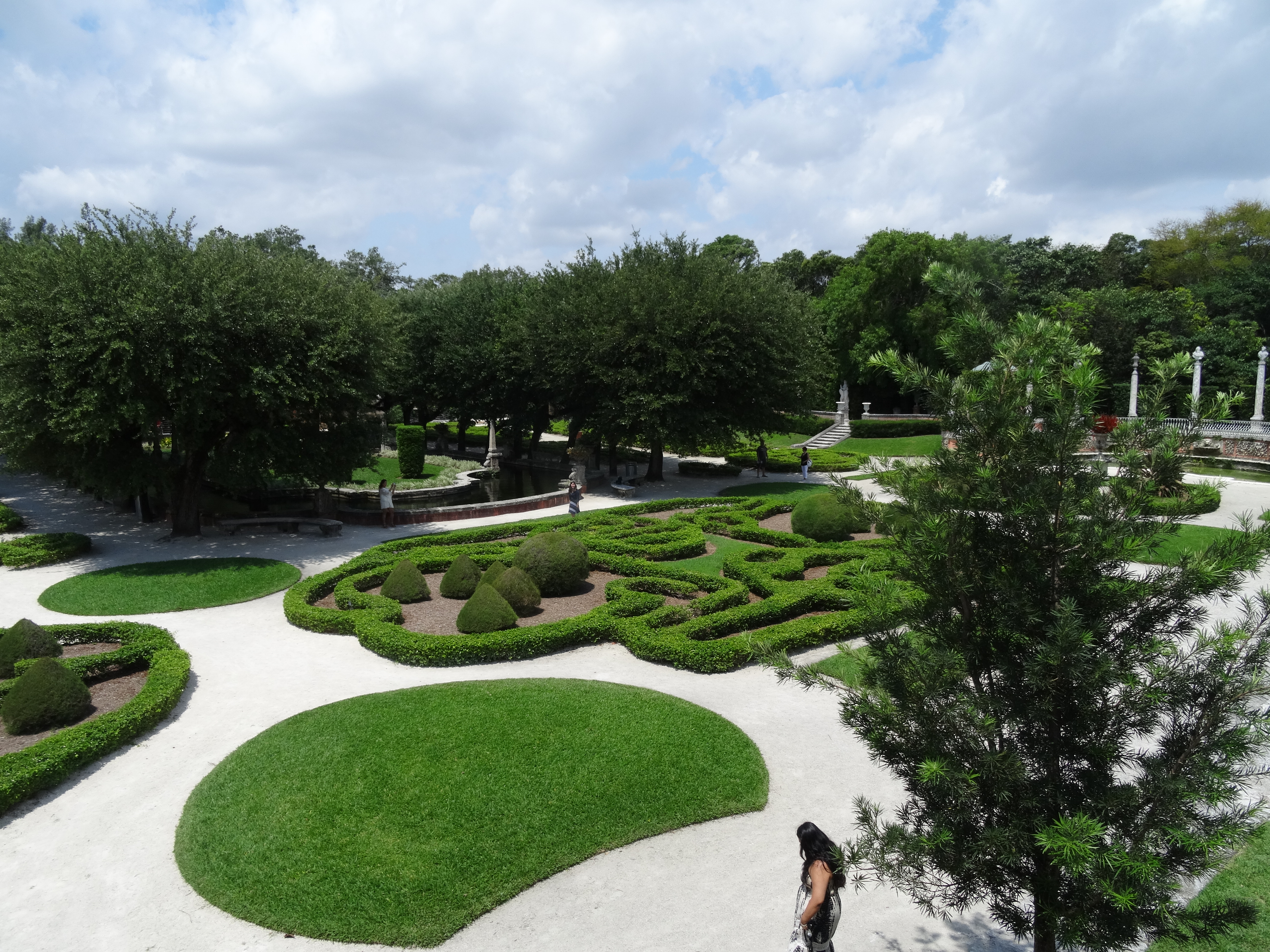
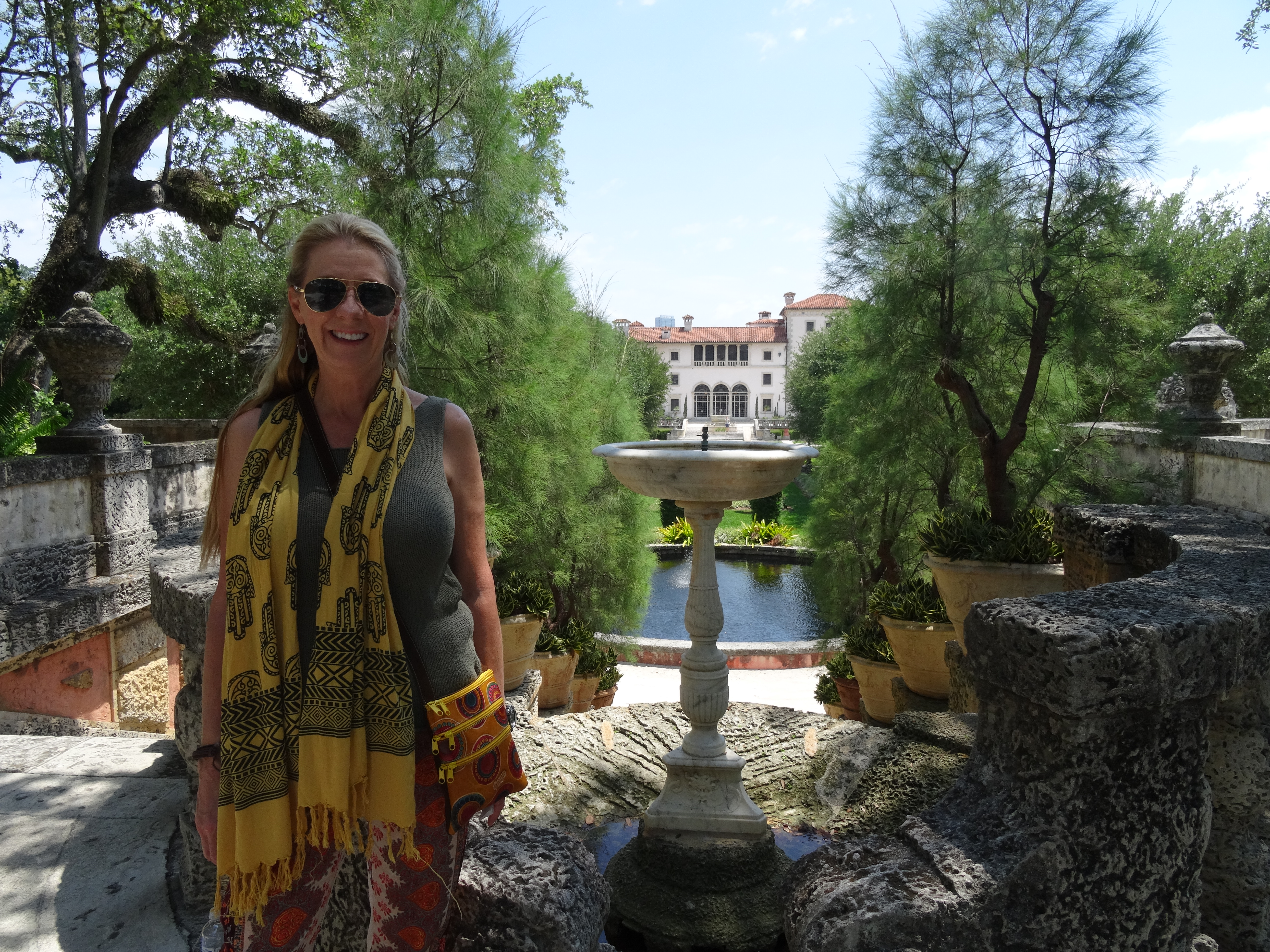
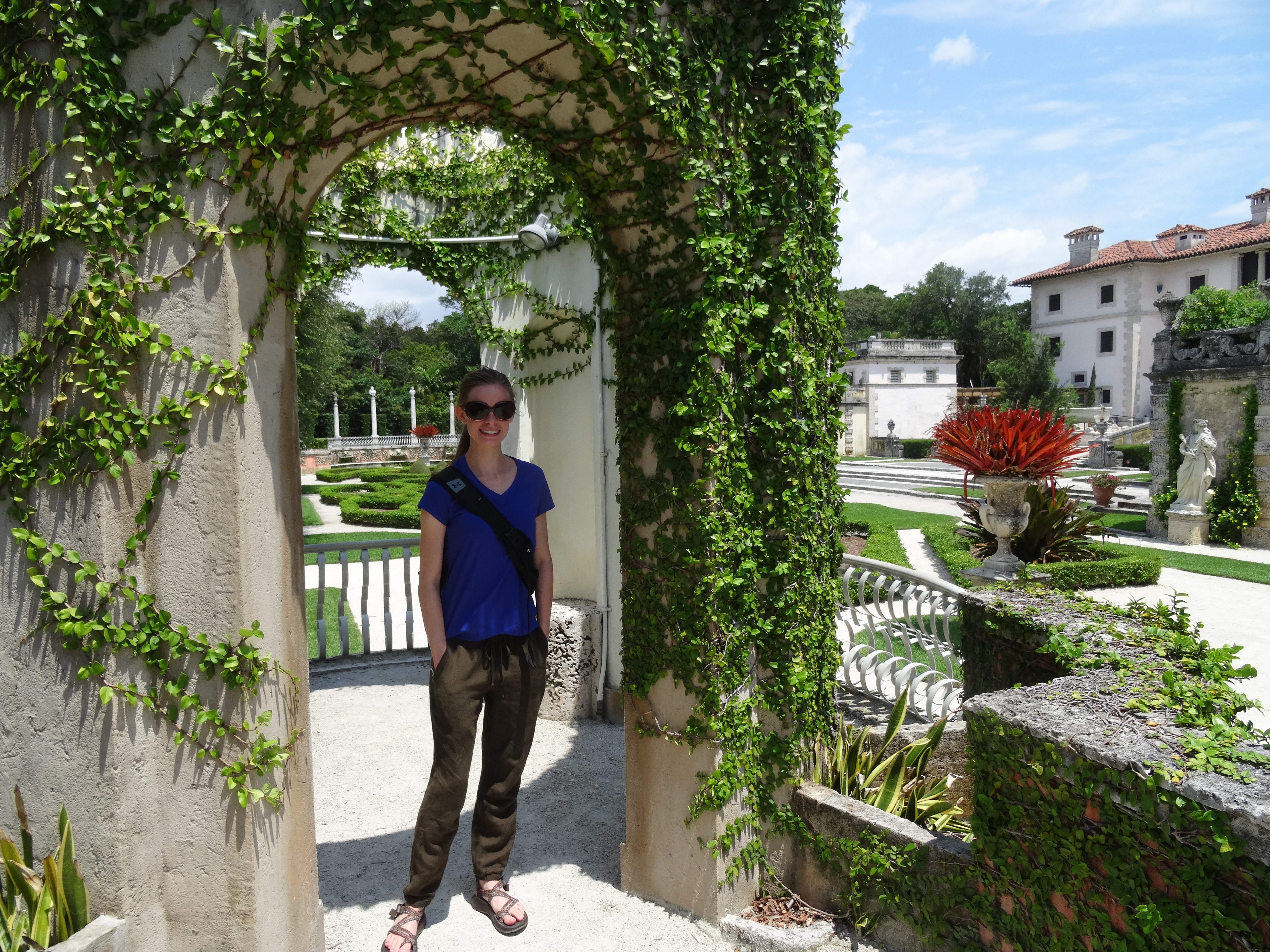
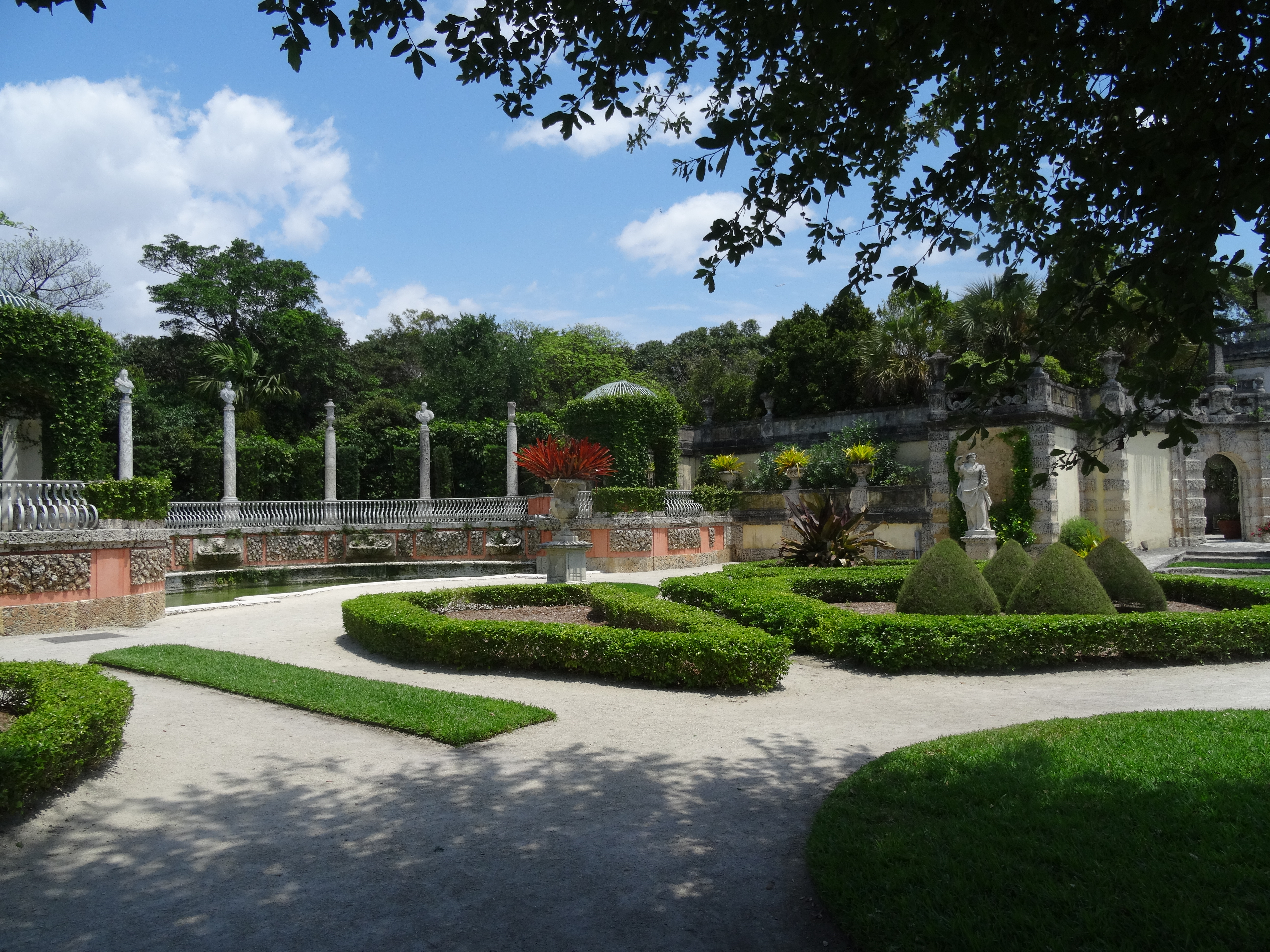
The Vizcaya is one of those things that you simply have to see yourself to understand. The power and beauty of the estate is not only impressive, but also touching. Anyone who is in Miami and loves history is robbing himself if he does not go visit.
We will wrap up our Global Scavenger Hunt experience in the next post, so stay tuned!
Note: Many of our historical specifics are from the official Viscaya website. Check it out for more information!
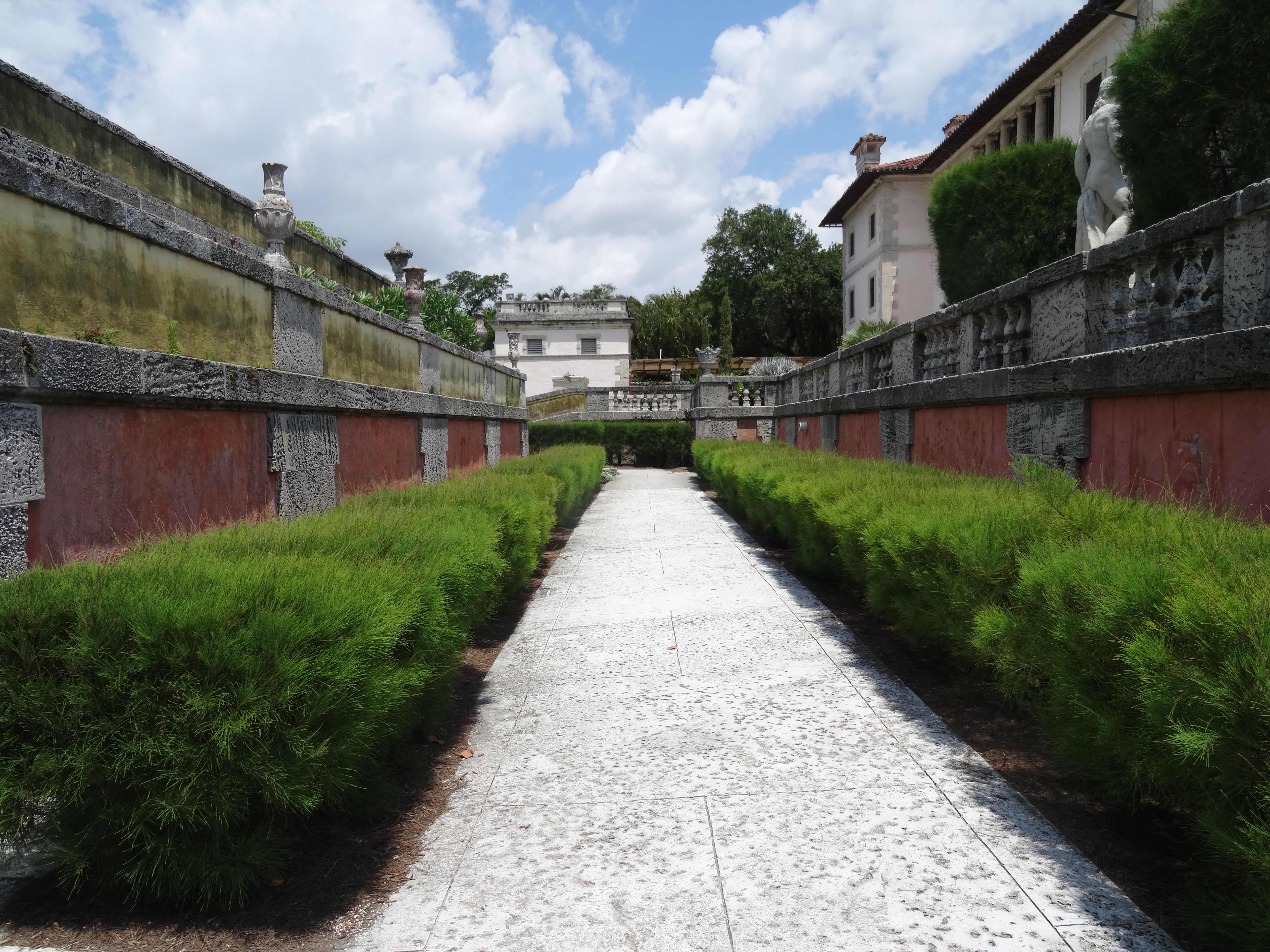
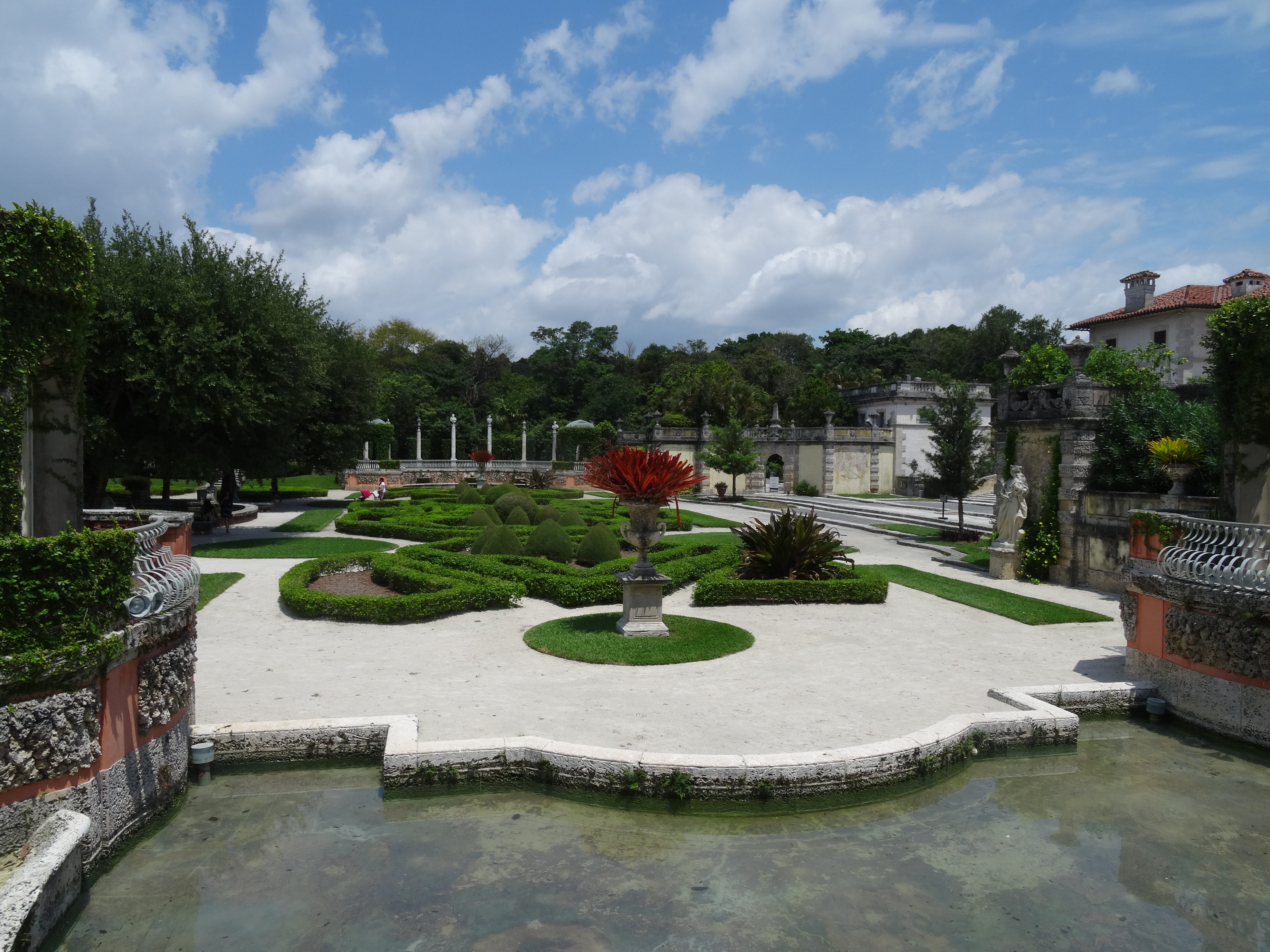
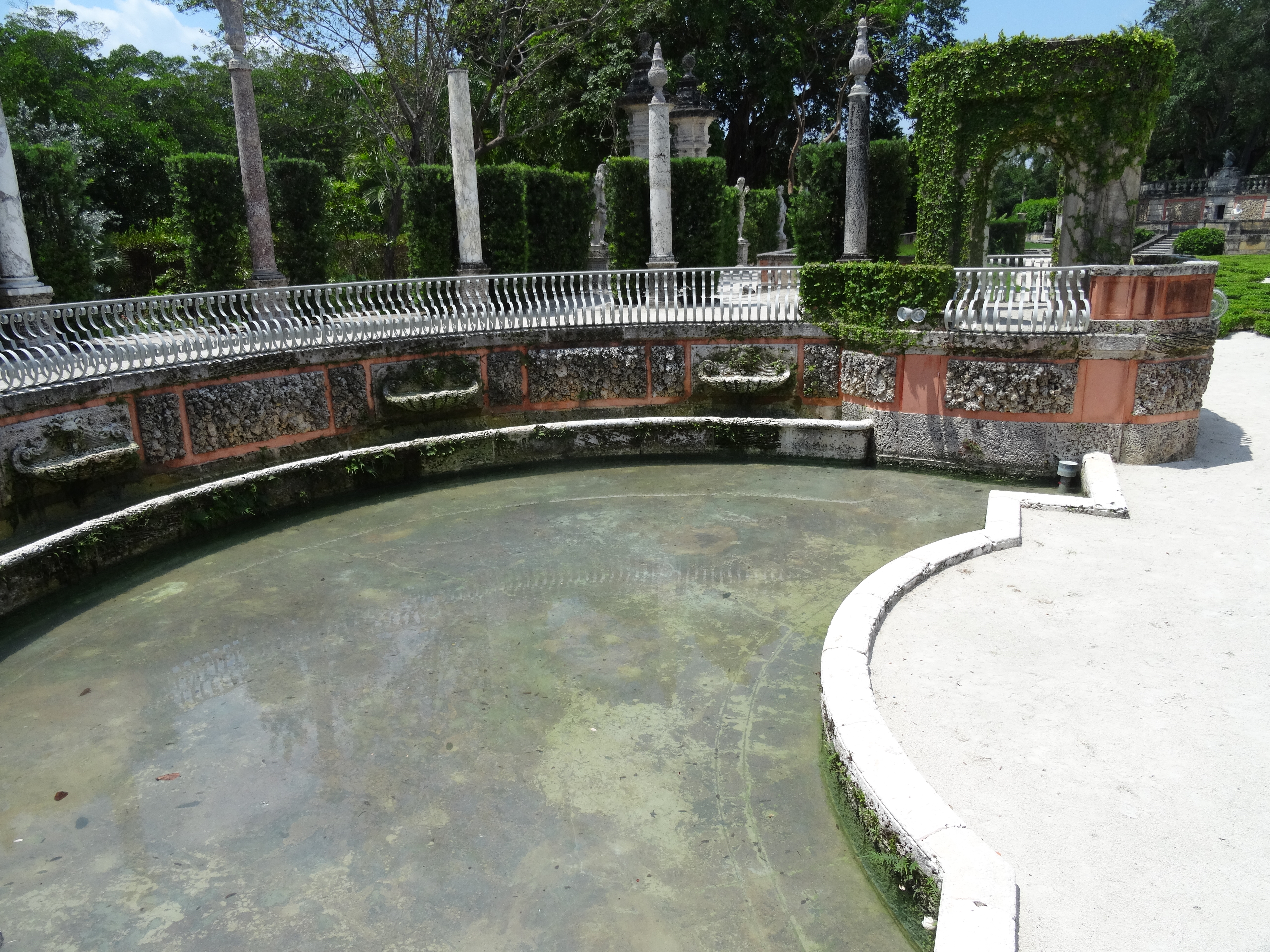
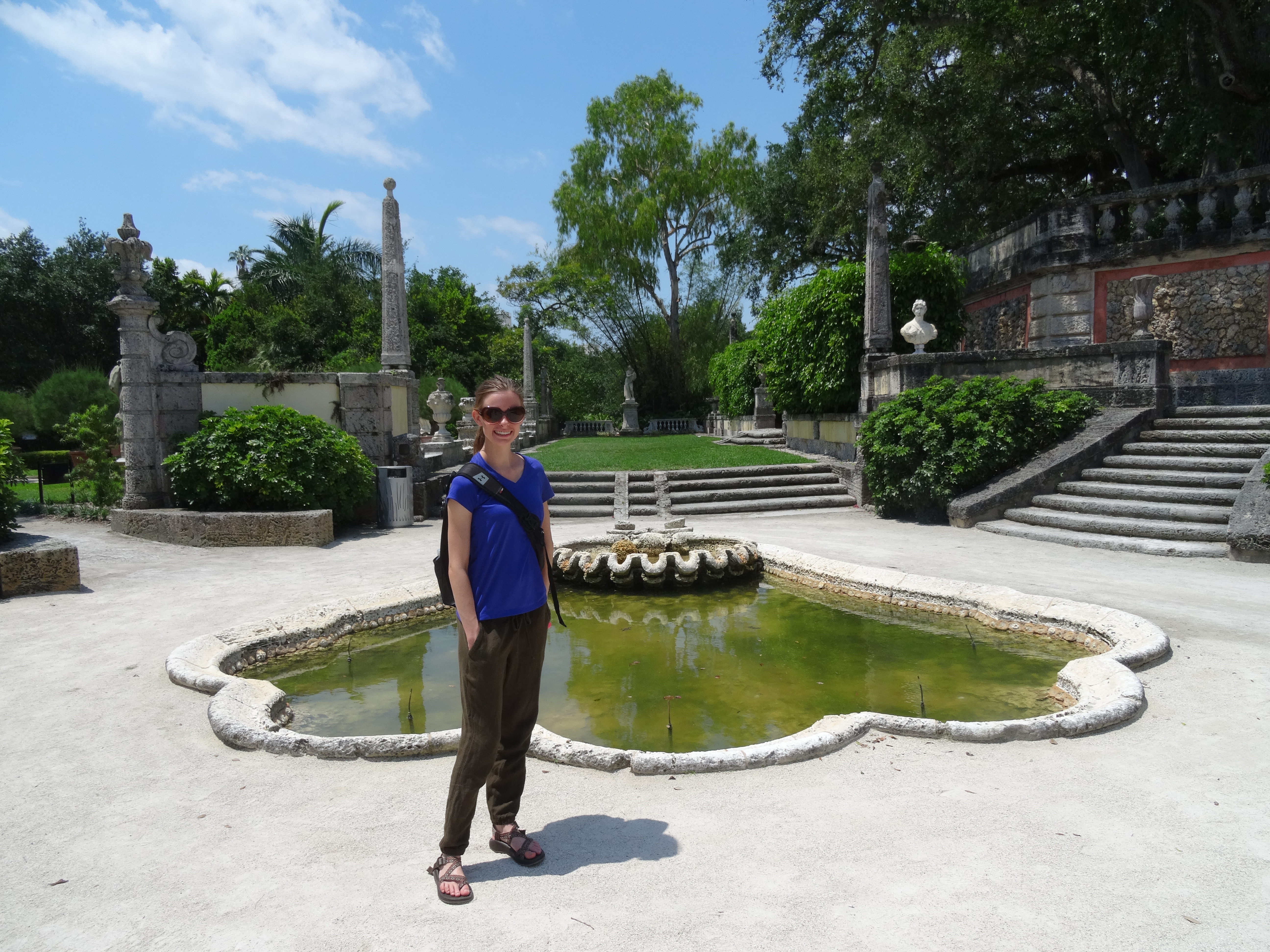
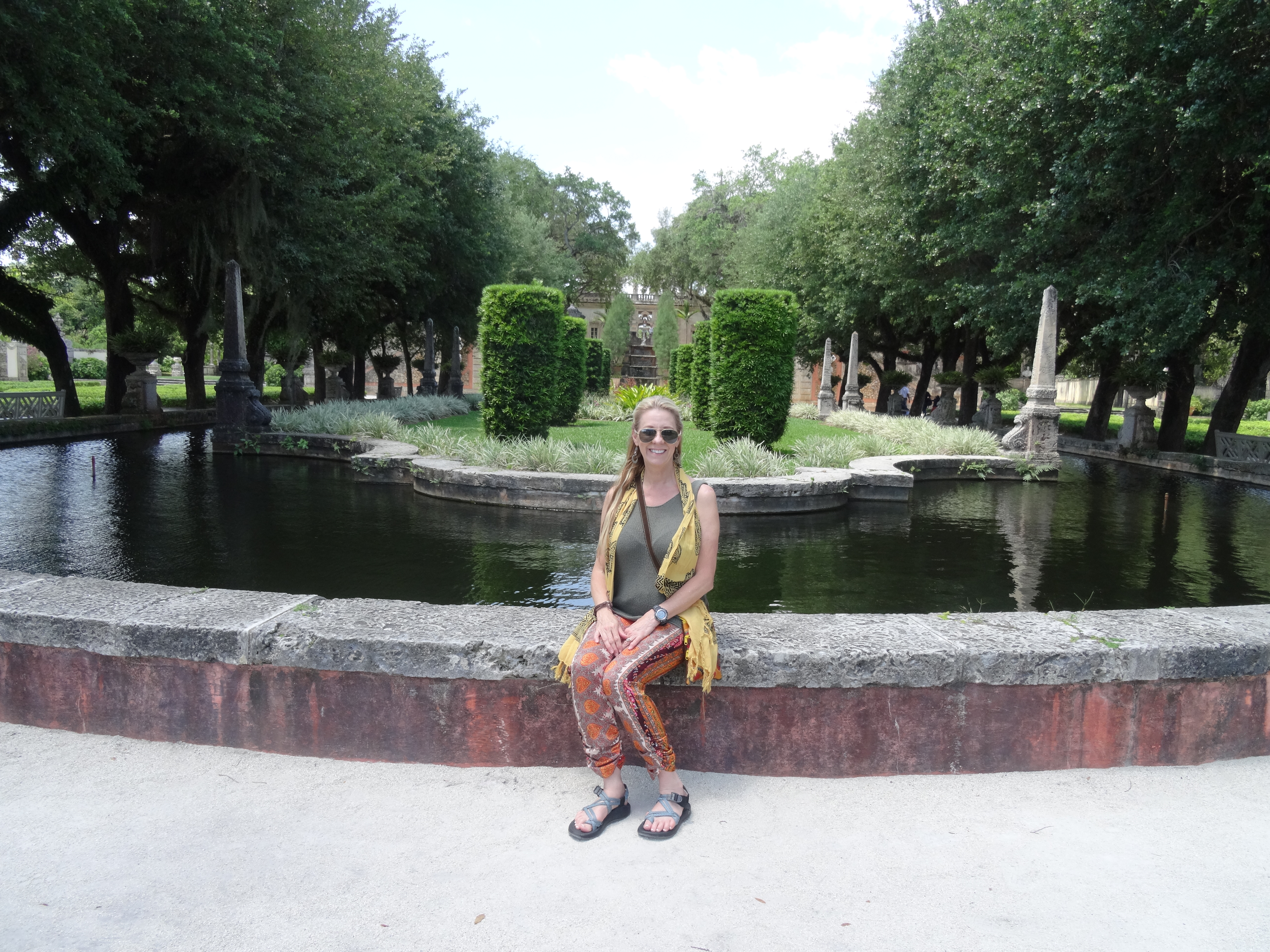
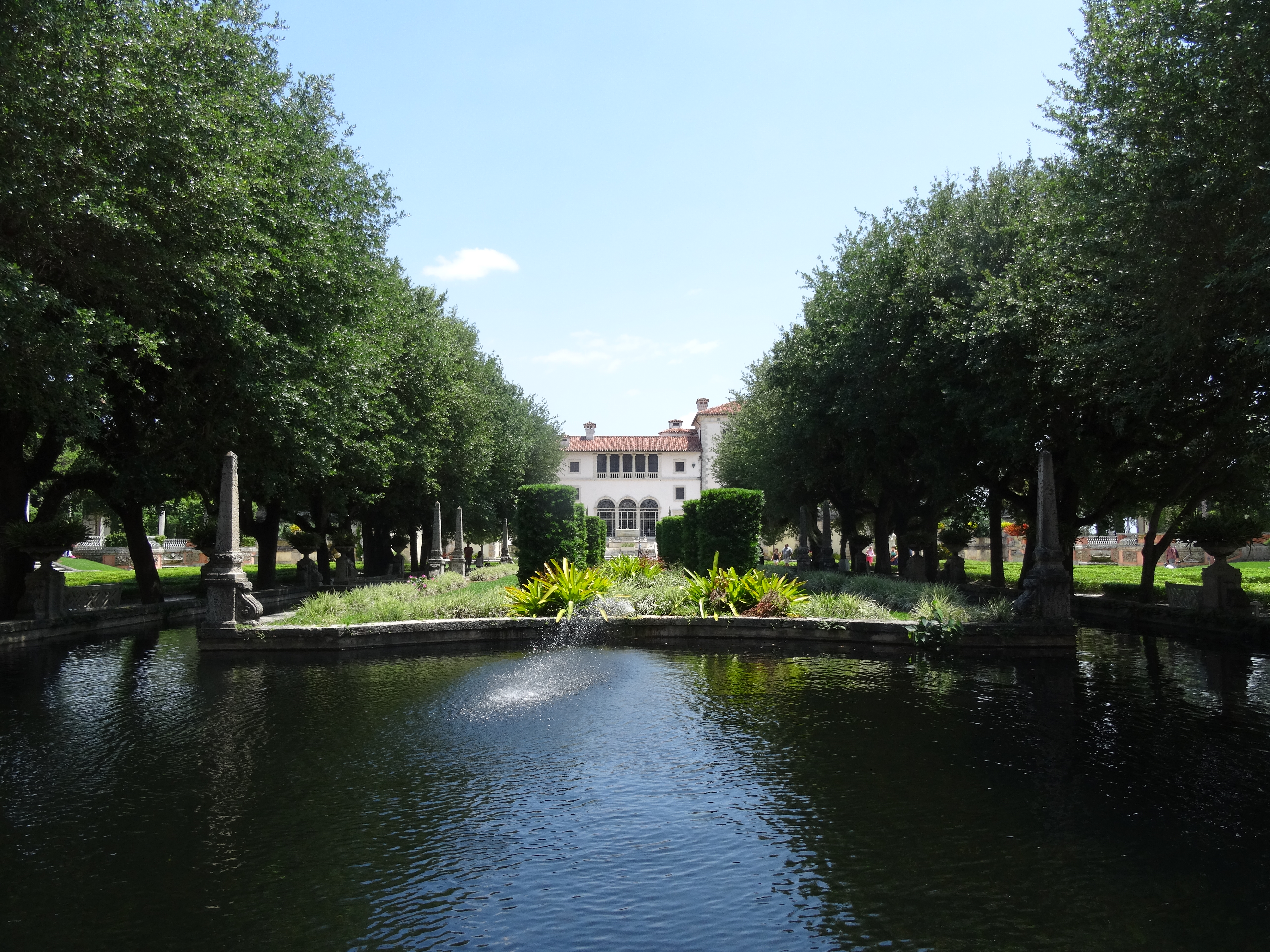







Right here is the right blog for anybody who would like to find out about this topic.
You know a whole lot its almost hard to argue with you (not that I really would want to?HaHa).
You certainly put a new spin on a topic that has been discussed for ages.
Great stuff, just wonderful!
Thank you for your kind words! It is always a pleasure to blog about something as special as travel is to us; we are so glad that others enjoy it as well!